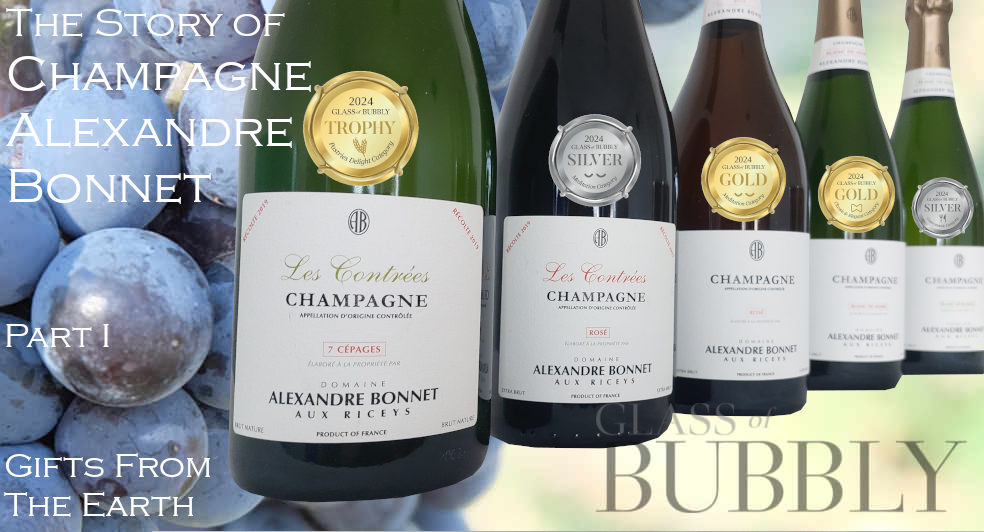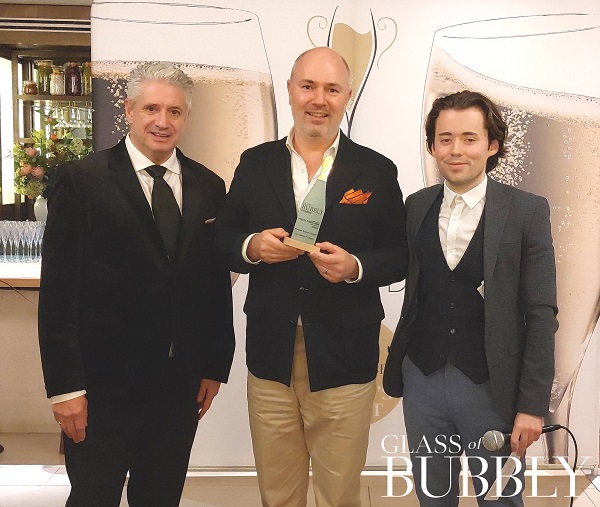The Story of Champagne Alexandre Bonnet – Part I – Gifts From The Earth
10th January 2025

A murmuring, meandering stream
Before it flows into the Seine, the Laignes winds along the valley floor surrounded by steep hills blanketed with pines, oak trees and vineyards. The history of the valley dates back to the Roman conquest of Gaulle, when Swiss survivors who fought in the battle of Autun against Caesar settled there. The Gallo-Roman period was also the starting point for the vineyards of the Barséquanais.
“The clanging
of
SWORDS
through
the valley.”
The vineyards of the Seigneur
As in Burgundy, quality viticulture began in the area when the Abbeys were founded during the 11th and 12th centuries. In 1104, William II, Count of Nevers, conceded his Tronchois vineyard in Les Riceys to the Abbey of Molesmes, which had been founded in 1073. The monks knew how to tend the vines because they had experience making wine for their religious ceremonies. But abbeys were also used to provide shelter for travellers (pilgrims, lords, bishops and such), who were quick to compare their wines with that of other monasteries or Abbeys.
“Wine
brings
PEOPLE
together.”
A tale of two regions
Over the course of history, the terroir of Les Riceys has been passed back and forth between Burgundy and Champagne. Burgundian in 830, the region was integrated into Champagne during the 13th century, then was again turned over to the Duke of Burgundy with the Treaty of Troyes in 1420. A few decades later it was returned to the Kingdom of France, after the struggles between Louis XI and Charles the Bold (or “Le Belliqueux”). But the rivalry between Burgundy and Champagne remained. In Les Riceys, the wineries have two entrances. When they were built, one entrance led out to Champagne and the other to Burgundy. So depending on the vintage, the wine was taken out through one door or the other, depending on the advantages of one or the other.
“The
WINDS
of
CHANGE.”
“A land
in search of
MEANING”
Son of Burgundy, brother of Champagne
During the French Revolution, most people living in Les Riceys worked in the vineyards. The wines from its slopes, was as highly esteemed as the finest Burgundy wines to be somewhere between that of the vineyards of the Côte d’Or and those of Mâcon, were exported to Picardy, Normandy, Flanders and Holland, in particular rosé wines (which were called “gris” – which means grey – at the time).
“The head
says
CHAMPAGNE,
the heart
says
BURGUNDY.”
The three villages (Ricey-Bas, Ricey-Haute-Rive and Ricey-Haut) were united into a single commune in December 1790, and the division of France into departments gave rise to some controversy: some people did not want to be separated from nearby Burgundy, while others wanted to be more closely connected with Troyes, which was 50 km away. The head said Champagne, but the heart remained Burgundian.
It wasn’t until 1927 that the white wines of the Aube region were included in the Champagne appellation once and for all. But the vineyards of Les Riceys stayed closely connected to Burgundy, with the production of the famous Rosé des Riceys.
The hand of God
The Barséquanais area is made up of 5 villages: Bar-sur-Seine, Chaource, Essoyes, Mussy and Les Riceys. The older citizens of the Barséquanais would say that the region was a hand, and each finger was one of the valleys: Arce, Ource, Seine, Laignes and Sarce. Laignes was its index finger.
Rooted in the earth
The geology of the Riceys terroir is quite extraordinary for Champagne. It was formed during the Kimmeridgian period, which is part of the Upper Jurassic era, and is very similar to the highly respected Grand Cru area of Chablis, in Burgundy. The subsoils are mainly composed of marly limestone or argillaceous limestone, which helps to create elegant and complex aromas while retaining a generosity of fruit in the wine.
“Aromatic
elegance,
generous
fruit.”
The steep slopes enjoy natural drainage and wonderfully diverse aspects, which allows winemakers to get the very best from the semi-continental climate in Champagne: cold winters, hot summers and moderate rainfall.
Gifts From The Earth by Champagne Alexandre Bonnet – All credit for the written work belongs to Champagne Alexandre Bonnet. Originally published on alexandrebonnet.com. Discover their award winning Champagnes and their Trophy winning Les Contrées 7 Cépages label on Champagne Alexandre Bonnet.
Interview With The President of Champagne Alexandre Bonnet – Arnaud Fabre

Arnaud Fabre (middle) – The President of Champagne Alexandre Bonnet – Collecting The ‘Pastries Delight’ Trophy at the Glass of Bubbly Awards 2024 for their Les Contrées 7 Cépages
![]()
Oliver Walkey
Champagne and Sparkling Wine Writer, Focused on Bringing the Exciting and Fascinating World of Bubbly to You.
